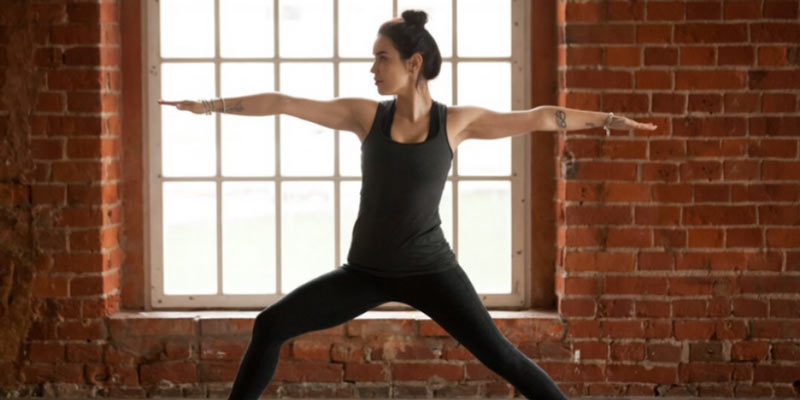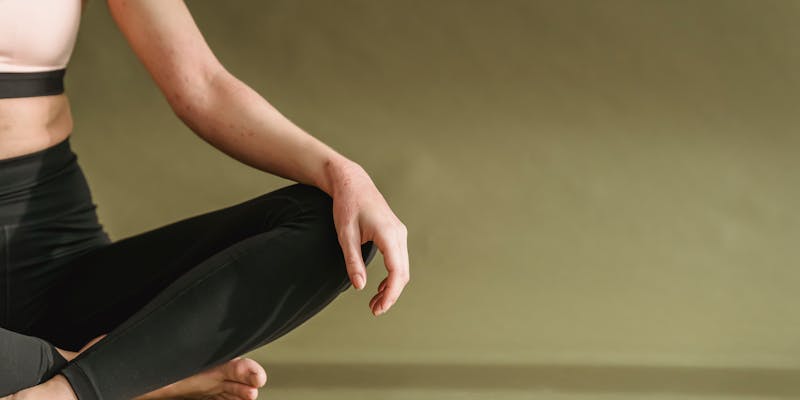One of the most beneficial aspects of working on your core is improving your physical health, raising your posture, and promoting general well-being. The basic yoga practice, which focuses on balance, strength, and flexibility, is a tried-and-true strategy for developing a solid and powerful core. Yoga poses that require standing provide the most support for oneself. They encourage the involvement of core muscles. For beginners, these may appear difficult to join and hard at first, but with repeated applications, they become part of an enjoyable routine. Let's look at five standing balancing yoga poses that are good for developing core strength.
What are Standing Balance Yoga Poses?
If you want to stay fit and healthy, follow the standing balance yoga poses discussed below:
Mountain Pose (Tadasana):
Balance on your toes by keeping your legs straight and standing with your feet together. Try to distribute your weight equally from both sides. Feeling the ground might increase your sense of stability. Activate your leg muscles by elevating your shins slightly with the kneecaps, revealing the strength of your lower body. Allow your arms to naturally fall to both sides, palms outstretched and turned forward, to encourage focus and work mode. Pull your shoulder blades down your back as if you were attempting to extend your spine to the sky. Now stretch up and lengthen your neck. Imagine yourself there, close your eyes, and take a deep breath, with your consciousness in this specific area, bringing your legs firmly to the ground.
Tree Pose (Vrksasana):
Place most of your weight on your right foot and find a comfortable place to stand. Using your fingertips, gently lift your left foot and place it on your right thigh or calf. By this point, you should have found your balance. Softly (or lightly) fold your palms at your heart center. When you feel stable, extend while inhaling and imagine yourself as a tree with branches reaching the sky.

Upward Hand Pose (Urdhva Hastasana):
After breathing from the Mountain Pose, lower your hands to the floor. Stretch your arms wide and upward, palms facing or touching each other. Bring your shoulders away from your ears, and use your fingertips to look up at the sky. Sink deeper into your foundation (your feet), producing the yearning to be drawn upward by the sky. This is an empowering stance for five breaths, with your sides elastically stretching and your abdominal muscles engaged. Slowly release your arms and return to the starting place in the mountain pose, bringing the energy obtained from the meditation.
Chair Pose (Utkatasana):
Take the lead from Mountain Pose and, as you breathe in, crouch in a sitting position with your hips backward and knees bent as if in an imagined chair. You may do this exercise with your arms parallel to the floor or above, with your biceps near your ears. Light your legs to maintain a uniform angle, and keep on your heels so your toes continue to wiggle. Continue to breathe like this, and on the fifth breath, lift your legs and return to Mountain Pose, paying attention to the energy in your legs and the power of your stance.
Warrior II (Virabhadrasana II):
Step with your feet wide apart, your hands at your sides and slightly bent so they are parallel to the ground and facing down. Please maintain an open stance with your right foot turned 90 degrees and your left foot bent slightly. Bend your right knee as much as possible, keeping your right foot directly above your right ankle until your thigh is parallel to the floor. Bend your elbows to a 90-degree angle, cradling your thumbs and tucking your remaining fingers behind your wrists. Hold this pose for five breaths, feeling your hips, legs, and spine change. Practice bending your hips towards the floor and completely extending your arms while remaining in control of the effort and ease.

Benefits of these Balanced Yoga Poses:
- Enhanced Core Strength: The most visible standout positive of standing balance poses is the rising level of core strength. According to these poses, the abdominal, back, and pelvic floor muscles must work together to maintain stability and, consequently, small strengthening changes for these regions over time.
- Perfect balance and stability: Doing these balance poses regularly with a natural flow helps you improve your physical balance and stability. It is essential to daily living and prevents falling, impacting our aging.
- Getting rid of unwanted thoughts: These balances demand concentration and deep focus to maintain these postures. This exercise focuses on the present moment, which may improve reasoning functioning and reduce stress and anxiety-related symptoms.
- Better Posture: Not only does this make you feel stronger, but also better. You will notice that your back is straighter and your posture has improved. A strong core helps the spine carry the weight from all parts of the body lying over it, which reduces back pain and keeps our spine in an upright position.
- Increased Flexibility: Besides the main benefit (standing balance poses), certain standing balance poses incorporate stretching and increasing mobility (flexibility in the legs, hips, back, and shoulders). Flexibility in preventing injuries and getting the full range of motion are necessary.
Practicing Caution In Yoga:
Yoga, while often associated with relaxation and flexibility, also involves physical movement. To reap the benefits and avoid setbacks, approach your practice with awareness and caution.
Pay attention to your physical needs. Avoid forcing yourself into positions that hurt or are uncomfortable. Adjust the poses as necessary, and seek advice from your instructor if you are not sure.
Start slow and gradually progress. Don't rush into advanced postures, especially if you're new to yoga. Build strength and flexibility gradually to minimize the risk of injury.
Be mindful of pre-existing conditions. Inform your instructor about any injuries or health concerns before practicing. They can suggest modifications or advise against specific poses.
Remember, yoga is a journey, not a destination. Be patient with yourself, celebrate your progress, and prioritize safety over pushing your limits. By staying mindful and approaching your practice cautiously, you can fully experience the transformative power of yoga.
Conclusion
Integrate these stabilizing yoga postures into your routine for noticeable changes in the power of your abdominal muscles, balancing, and yoga practice. Every posture is different, and these poses help build muscles and allow the mind to focus while increasing body awareness. By all means, have it in your mind that the path of yoga is a personal and continuous journey and that you succeed in the moment, learn from challenges, and take pleasure in the walk to a stronger core and more balanced you.




